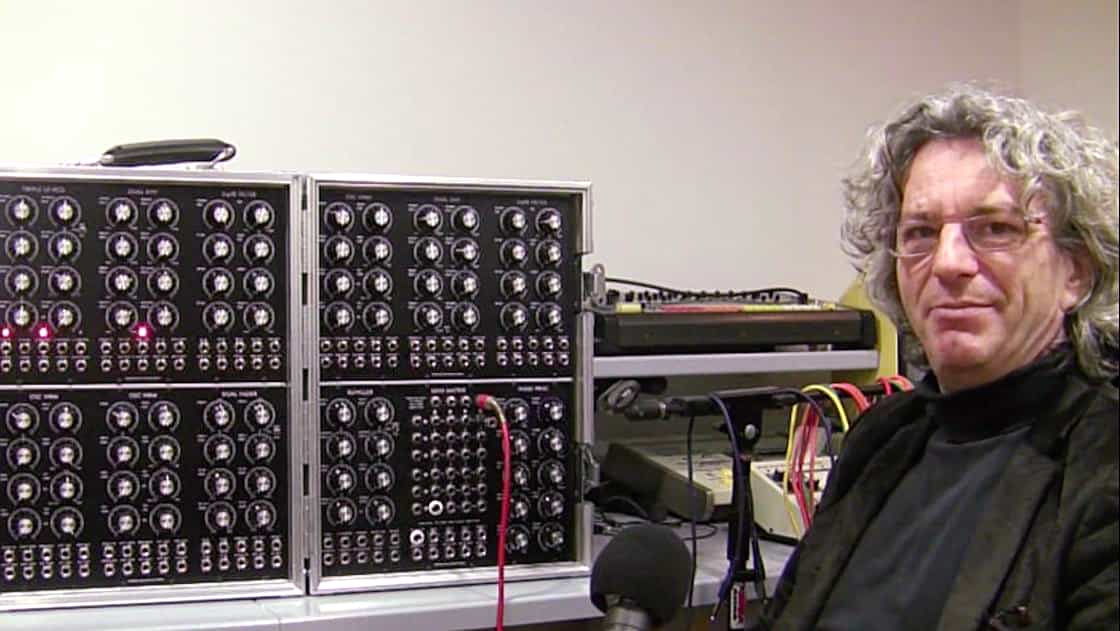

As we journey through the rich, multi-dimensional world of sound synthesis, we encounter visionaries who’ve reshaped how we think about instruments—and sound itself. One such figure was Rob Hordijk, a brilliant Dutch synth designer and electronic music educator whose passing in the fall of 2022 marked a profound loss for the global synthesizer community.
Hordijk was celebrated for his inventive approach to instrument design—tools that were as inspiring as they were unconventional. His legacy lives on through a deep catalogue of ideas, modular systems, and standalone instruments, chief among them the iconic Benjolin. A wild fusion of chaos and control, the Benjolin reflects Hordijk’s deep curiosity and radical creativity, continuing to inspire artists worldwide.
Rob Hordijk: Sculpting Sound with Silence and Circuitry
As we journey through the rich, multi-dimensional world of sound synthesis, we encounter visionaries who’ve reshaped how we think about instruments—and sound itself. One such figure was Rob Hordijk, a brilliant Dutch synth designer and electronic music educator whose passing in the fall of 2022 marked a profound loss for the global synthesizer community.
Hordijk was celebrated for his inventive approach to instrument design—tools that were as inspiring as they were unconventional. His legacy lives on through a deep catalogue of ideas, modular systems, and standalone instruments, chief among them the iconic Benjolin. A wild fusion of chaos and control, the Benjolin reflects Hordijk’s deep curiosity and radical creativity, continuing to inspire artists worldwide.
Born in 1958, Rob described himself simply as a "synthesizer designer and builder." His fascination with electronics began early—drawn in by the glow of vacuum tubes in stereo amplifiers. At age 14, his father gifted him a subscription to an electronics course, which eventually led to him earning a ham radio license.
Though trained as a designer, not a musician, Rob’s creative foundation was rooted in the visual arts. In the 1970s, he studied sculpture and jewelry, and approached electronic music with a similar sensibility—treating sound as a material to be shaped and abstracted. He cited Brian Eno’s ambient works and Luigi Russolo’s Intonarumori as early inspirations:
“In those days I was quite interested in the idea of sound as a material to be sculpted, in the same way you can sculpt wood and metal. You can make mechanical objects that make all sorts of sounds, or you can make electronic objects that make all sorts of sounds. But what I like about the electronic objects is that you don't see what makes the sound. It opens the way to sort of make it a bit mysterious.” In the 1980s, as microcontrollers and processors became more accessible to hobbyists, Rob dove headfirst into the technology—not from a commercial impulse, but out of pure curiosity. He experimented with early Curtis chips, RCA’s 1802-based SuperElf processor, and Apple ][+ systems. He programmed plucked-string synthesis and pitch shifting in Forth using Mountain Hardware cards, explored the DMX1000 DSP by 1984, and later moved to the Atari ST and Akai S900. His deep appreciation for flexible synthesis eventually led him to the Clavia Nord Modular G2, which he championed passionately.
“I am not really a gear freak. But I do believe in mastering synthesis techniques—making synthesis a second nature—so you can fully concentrate on the creative process.” In parallel with his art and sound experiments, Rob pursued formal studies in Information Technology, completing 11 years of education in design methods and inventory control. This duality—of abstract artist and methodical thinker—infused all of his work.
Beyond his own designs, Rob contributed extensively to the Nord Modular G2 community, developing patches, sharing insights, and writing a widely respected unofficial manual. His sound design has appeared in architectural spaces, film, and dance performances, though he never released a commercial record. In 2022, Rob announced his retirement, stepping away from taking new orders—but his impact endures.
Rob Hordijk’s work remains a powerful reminder that instruments can be more than tools—they can be portals into new ways of thinking, listening, and being.